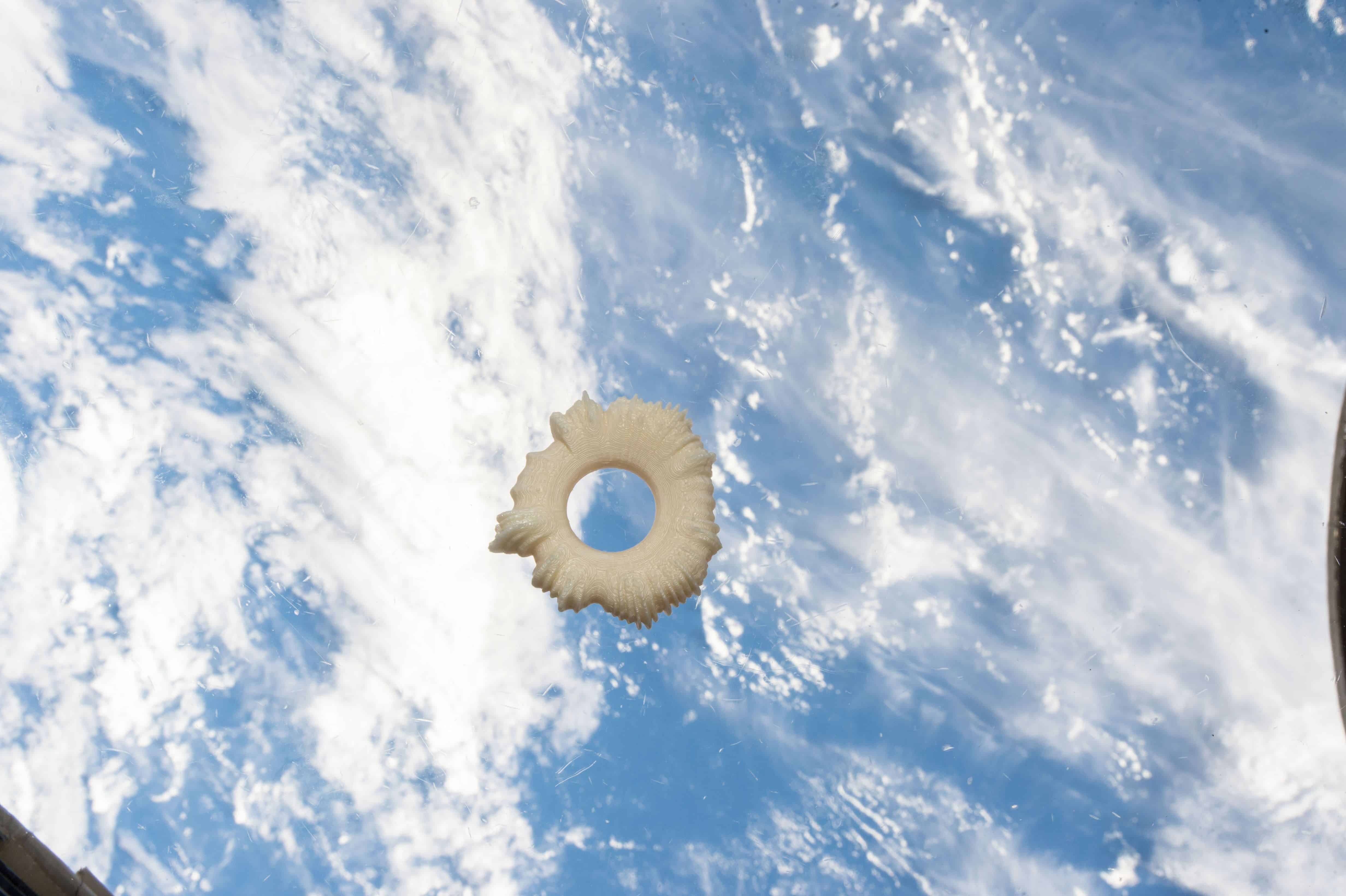Art has found its way to space! On Friday, a 3D printer aboard the ISS launched a sculpture of the human laugh into space.

It’s not the first time art has gone to space — but it’s the first time it’s been made up there, as part of project #Laugh. This collaboration between Israeli artist Eyal Gever and California-based company Made In Space (the guys that build and operate the ISS’s Additive Manufacturing Facility/3D printer), started back in Dec. 2016 when Gever launched an app that converts the users’ unique laugh soundwave into a 3D-model.
Gever let all the app’s users vote on their favorite ‘laugh star’ — the winner was Naughtia Jane Stanko of Las Vegas, whose model was beamed up to the ISS and printed out Friday. But it’s not just a pretty shape — the star carries symbolic significance, Gever said.
“We live in epic times, where continuous disruption and rapid change exists against a backdrop of extremely volatile cultural shifts constantly challenging our human conscience,” he said in a statement.
“A laugh star floating in space, above all our heads, is my attempt to create a contemporary metaphor for the hanging ‘Sword of Damocles,’ a reminder that the beauty of human life is so fragile.”
The AMF is usually put to work printing spare parts, tool, and a whole wide range of stuff the astronauts need aboard their orbiting lab. Made in Space were more than happy to expand on its usual range of applications for the project however.
“It’s important for the world to see that technology and art are not independent of one another,” Made In Space President and CEO Andrew Rush said in the same statement.
“We’ve enjoyed being a part of this project, and hope that it communicates to the world that innovation and creativity are the driving forces behind humanity’s future in space.”
Gever and Made In Space Chief Technology Officer Jason Dunn will showcase the laugh star on March 13 at the South by Southwest Festival in Austin, Texas.






